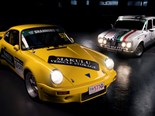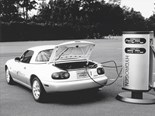Market Watch: Velvet glove, iron fist
Not all cars shout, look at me!
Some people who own fast cars want them to look the part, with stripes, aero packs and multiple exhaust outlets.
Others like to blend with the traffic, leaving the car’s performance untapped until there is a need to overtake swiftly or an empty, high-speed road beckons.
Germany, with its network of high-speed autobahns, has been responsible for an abundance of fast cars. Britain and the USA actively discourage travel at 110km/h or above, yet they have for decades produced models that match the German contenders’ performance.
All apart from the big Chrysler were very expensive when new; so costly in the days before real-estate values went crazy, they would cost more than a decent suburban house. Today, the most expensive of our selected models is unlikely to top $50,000.
Savings made on the purchase price don’t help much though when talk turns to maintenance. In fact, quite the reverse. Buying an ultra-luxury car for minimal money can saddle you with a list of overdue repair items that will dwarf the original outlay.
Wise buyers will spend somewhat more on a car that has regularly seen the inside of a specialist workshop and will, with regular attention, remain reliable.
BMW 750LIE66 SERIES
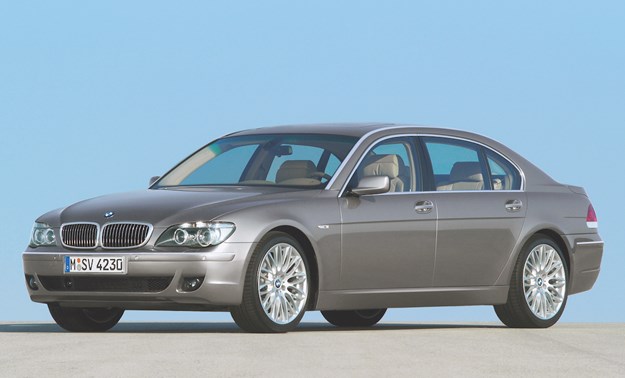
BMW’s first V12-engined sedan, the 750iL, appeared in 1987 and was said to use more computing power to run its various systems than the Apollo 11 capsule that transported humans to the Moon. Fragile sensors and complex electronics were destined to not survive for long, and finding a viable 750iL in today’s market is almost impossible.
Luckily the later 750Li carried on the tradition of brutality in a Hugo Boss suit and has proved to be durable and seriously fast. With a 4.8-litre V8 in place of the V12 and 270kW, the 1950kg mega sedan hits 100km/h from rest in 6.4 seconds and (where legal) will reach 241km/h.
With a new shape and even greater levels of electronic complexity, the E66 sedan when new in 2006 cost $230,000 but included every luxury fitting known to exist at the time.
The problem over time is that those complex systems and gadgets, plush leather and timber veneers suffer from neglectful owners and extremes of temperature.
Locally sold cars, even those that have travelled 10,000km or less annually, will typically sell at less than $30,000. Those privately imported from less hospitable countries should probably be avoided completely.
CHRYSLER 300C SRT8
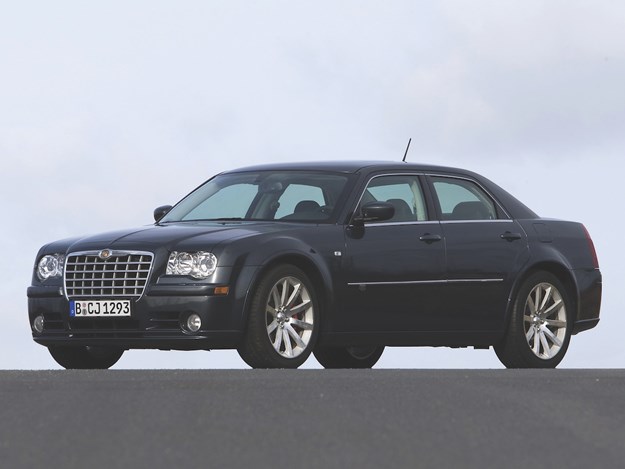
If you’re looking for the mob boss or drug runner in scenes from a US telemovie, check the side-streets for a lurking 300C.
Whether by intent or pure chance, Chrysler’s decision to combine a muscular, high-waisted body with a grille echoing its 1950s ‘Letter Series’ has created a genuine American icon.
Supplementing the already tough 300C image, SRT8
versions with 317kW added some heft to this automotive broadsword and helped Hemi owners leave the scenes of various crimes more rapidly.
The SRT8 sedan at launch here in 2006 cost $71,990, with the rare Touring station wagon only $3000 more.
Accompanying the heavy-hitting engine with its five-speed autobox and Mercedes-like dogleg shift gate, this most potent of 300Cs added four-pot calipers and ventilated rotors all-round, plus 20-inch wheels with wider rubber at the back.
Despite being the most powerful model in this group, with abundant leather on the inside and Bentley nuances to its styling, the SRT8 is generally cheaper than the rest.
Unless you happen to snare a car that has travelled well shy of 100,000km during its 15-20 year lifespan, the asking price for most will be $20,000 or less.
BENTLEY TURBO R

If the British aristocrats were wandering around in the late 1980s shell-shocked, partly blame this car.
For decades Bentley was a cut-price clone of Rolls-Royce and any glimmer of individuality was by accident. In the 1950s there was a swish-looking Continental R, then nothing uniquely Bentley until the 6.75lt V8 acquired a massive turbocharger, delivering boost from close to idle with maximum torque at just 1800rpm.
Australia's first Turbo Rs in 1989, were priced at $352,000. Not only would it buy a house but one that didn’t look out of place with a Bentley in the driveway. Inside the Turbo R was good taste and luxury in abundance. The leather came from cattle raised in fields without barbed wire, minimising defects to the hides and the matched timber veneer was polished by hand. Given its opulence, Turbo R buyers may have expected the shifter protruding from the console to control a sophisticated electronic transmission. Instead, should any bother to enquire, they would find it connected to a very old-style but durable three-speed. Many Turbo Rs were sold in Australia and values a decade ago were plunging into the abyss. Only since the pandemic have they experienced a growth spurt which has pushed excellent cars towards $50,000.
MERCEDES-BENZ 450SEL 6.9
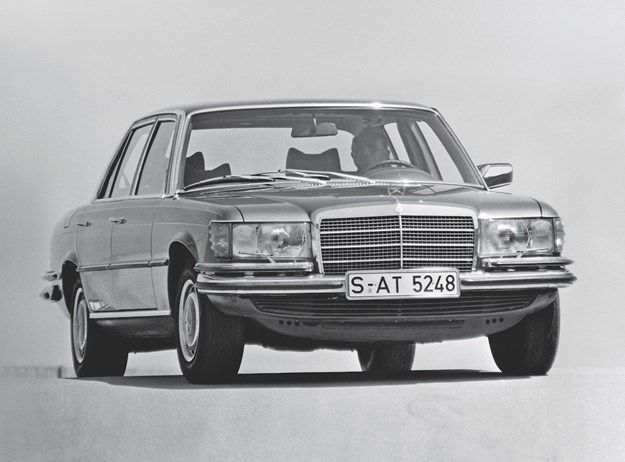
People who moved in elite circles and wanted those movements to go almost unnoticed would often drive the most powerful of Mercedes-Benz’s 1970s products.
The original 450SEL was a popular car in Australia. Even a Prime Minister was briefly chauffeured in one and car parks close to capital-city stock exchanges were brimming with the things. The SEL 6.9 was different.
Its engine was rated at 198kW but torque was a prodigious 510Nm. In 1978, at release, the 6.9 was claimed to be Europe’s fastest accelerating four-door sedan with a 7.2-second time for the 0-100km/h dash. The 6.9s in our used market tend to come with full histories but high kilometres. Good examples will need little spent immediately on maintenance, but save up for when that time arrives.
Air suspension played a major role in the SEL’s open-road serenity and must be kept in top condition. So too the cooling system that is vital to the health of the alloy-head engine and ensuring the air-conditioning does its job.
Values of the 450SEL 6.9 have increased during the past five years, but good cars remain affordable. Some will be priced at $50,000 and above; money that is only viable for a car that is pristine and mechanically perfect.
JAGUAR XJR V8

Jaguar dabbled with turbochargers for its Le Mans contenders and XJ220 supercar, but when reliable performance was required for a high-performance saloon, it turned to supercharging.
Early versions of the XJR had 4.0-litre six-cylinder engines with a single Eaton supercharger. From 1997, with the change to V8 power, engine capacity remained at 4.0-litres but when supercharged, would produce 276kW against the six-cylinder version’s 240kW.
The X300 body continued virtually unchanged in V8 guise, sitting on a 2870mm wheelbase which helped with rear-seat legroom. The list of features was almost endless but component age and complexity meant that important systems need to be tested pre-purchase. Repairs to the air-conditioning, replacement of door window motors and fixing sound-system glitches can collectively add thousands to the cost of an apparently affordable V8.
Early cars suffered piston and timing gear failures, but affected engines will have either been replaced under warranty or had their problems cured with redesigned components.
Unless a car has travelled 300,000 kilometres and is due for extensive maintenance, excellent examples might exceed $30,000. For that money expect detailed service history, recent brake and suspension replacements, a decent interior and paint that hasn’t begun to delaminate.
Unique Cars magazine Value Guides
Sell your car for free right here
Get your monthly fix of news, reviews and stories on the greatest cars and minds in the automotive world.
Subscribe

.jpg)








.png)
.jpeg)
